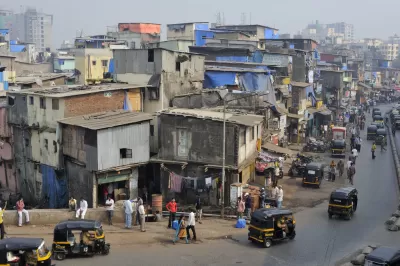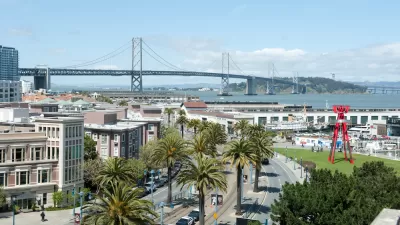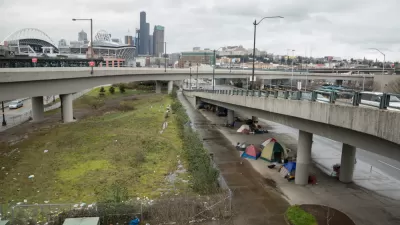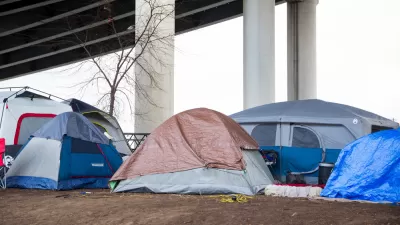In photographs and written observations of a recent trip to Mumbai, India, former SPUR Director Jim Chappell queries how the lives of the poorest people there compare to the lives of low-income Americans.

India has long been emblematic of poverty and inequality. Mother Teresa is known for her work with poor of Kolkata (fka Calcutta). But U.S. poverty and inequality has been on the rise for decades, with the visibility of abject poverty at a nearly unprecedented level. In many U.S. cities, the co-existence of the housed and the homeless is strained, as the number of homeless living in streets and parks diminishes the livability of the cities for even its wealthier citizens. Jim Chappell, a planning consultant and former Executive Director of SPUR, recently traveled to India. As planners and architects can relate, recreational travel for those in the planning professions is never fully recreational. Travel quickly turns into an inquiry of what works differently in the respective destination.
Chappell was struck by the impression that the poorest people of India seemed less disconnected and less socially isolated than their counter-parts in the United States. Additionally, they seemed to have access to work and while housing was substandard, he saw far fewer people sleeping exposed, in the open, in public spaces. While admittedly not an academic or scientific, Chappell provides some food for thought about how we in the United States are failing our poor:
India is a tremendously different culture, an ancient culture with religions and family structures and social structures different from ours. I am not qualified to draw any conclusions from it. But somehow they have managed to provide work that is necessary for society and meaningful enough to the individuals that they do it. And the people have a place to live, very substandard though it may be.
For more detail on Chappell’s observation, as well as photographs, please visit the source article.
FULL STORY: What are we doing wrong?

Planetizen Federal Action Tracker
A weekly monitor of how Trump’s orders and actions are impacting planners and planning in America.

San Francisco's School District Spent $105M To Build Affordable Housing for Teachers — And That's Just the Beginning
SFUSD joins a growing list of school districts using their land holdings to address housing affordability challenges faced by their own employees.

The Tiny, Adorable $7,000 Car Turning Japan Onto EVs
The single seat Mibot charges from a regular plug as quickly as an iPad, and is about half the price of an average EV.

With Protected Lanes, 460% More People Commute by Bike
For those needing more ammo, more data proving what we already knew is here.

In More Metros Than You’d Think, Suburbs are Now More Expensive Than the City
If you're moving to the burbs to save on square footage, data shows you should think again.

The States Losing Rural Delivery Rooms at an Alarming Pace
In some states, as few as 9% of rural hospitals still deliver babies. As a result, rising pre-term births, no adequate pre-term care and "harrowing" close calls are a growing reality.
Urban Design for Planners 1: Software Tools
This six-course series explores essential urban design concepts using open source software and equips planners with the tools they need to participate fully in the urban design process.
Planning for Universal Design
Learn the tools for implementing Universal Design in planning regulations.
Smith Gee Studio
City of Charlotte
City of Camden Redevelopment Agency
City of Astoria
Transportation Research & Education Center (TREC) at Portland State University
US High Speed Rail Association
City of Camden Redevelopment Agency
Municipality of Princeton (NJ)





























